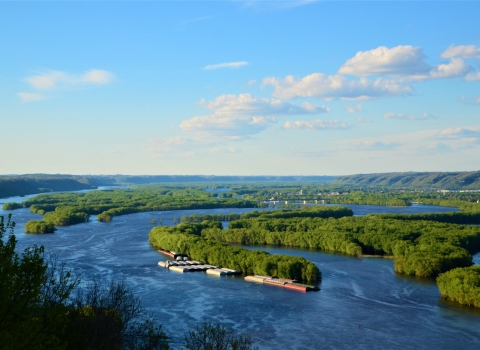The U.S. Fish and Wildlife Service has approved the recovery plan for the sharpnose and smalleye shiners, two small minnows found in north-central Texas. The recovery plan is based on the 2018 Species Status Assessment Report, peer review, and public comments received during the public comment period. The recovery plan includes efforts to improve water quality and quantity in the Brazos River benefitting not only the shiners but the surrounding communities as well.
The two shiner species have experienced significant population declines, primarily because of river fragmentation and the alteration of natural stream flows. Listed as endangered on August 4, 2014, the sharpnose shiner and the smalleye shiner are considered in danger of extinction throughout their ranges, based on the immediacy, severity and scope of the threats from the loss of habitat due to fragmentation and reduced water quantity and quality.
“Thanks to our collaboration with partners including Texas Parks and Wildlife Department, the U.S. Army Corps of Engineers, the Brazos River Authority, the Texas Commission on Environmental Quality, the Environmental Protection Agency, local municipalities, and private landowners we have a plan to recover two native Texas fish species,” said Amy Lueders, the Service’s Southwest Regional Director. “By implementing actions identified in the recovery plan we can improve the status of the sharpnose and smalleye shiners as well as the rivers they depend upon.”
Small minnows native to arid prairie streams of Texas, the two shiners are currently restricted entirely to the contiguous river segments of the Brazos River basin upstream of Possum Kingdom Reservoir. Historically, sharpnose and smalleye shiners existed throughout the Brazos River and several of its major tributaries within the watershed. The sharpnose shiner also historically occurred in the Colorado River and the Wichita River in Texas. Shallow, unobstructed flowing waters are essential to the minnows’ survival, growth and reproduction.
While they are not regulatory, recovery plans provide a framework for the recovery of a species so that Endangered Species Act protection is no longer necessary. The final recovery plan describes actions considered necessary for recovery of the two shiners, establishes downlisting and delisting criteria and estimates the time and cost to implement recovery actions for the species.
The final recovery plan is available here.
America’s fish, wildlife, and plant resources belong to all of us, and ensuring the health of imperiled species is a shared responsibility. We’re working to actively engage conservation partners and the public in the search for improved and innovative ways to conserve and recover imperiled species.



